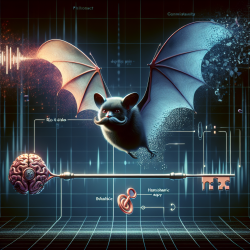Introduction
Malaria remains a significant public health challenge in sub-Saharan Africa, with children under 5 being the most vulnerable group. The use of insecticide-treated nets (ITNs) is a proven intervention to reduce malaria transmission. However, a recent study titled "Spatiotemporal analysis of insecticide-treated net use for children under 5 in relation to socioeconomic gradients in Central and East Africa" highlights a critical gap between ITN ownership and usage. This blog explores the study's findings and suggests strategies for practitioners to enhance ITN use, thereby improving health outcomes for children.
Understanding the Study
The study analyzed data from over 100,000 households in Central and East Africa (CEA) to identify barriers to ITN use. Despite an increase in ITN ownership to 70%, only 48% of households used them effectively. Key factors influencing ITN use included household size, number of children, education level, and urban versus rural residence.
Key Findings
- Household Size: Smaller households were more likely to use ITNs effectively compared to larger ones.
- Number of Children: Households with more than one child under 5 were more likely to use ITNs, possibly due to previous illness experiences prompting preventive measures.
- Education: Higher education levels in households correlated with increased ITN usage, indicating that education reduces misconceptions about ITNs.
- Urban vs. Rural: Urban households were more likely to use ITNs than rural ones, suggesting that access and attitudes towards ITNs differ between these settings.
Implications for Practitioners
Practitioners can leverage these findings to improve ITN use by:
- Targeted Education Campaigns: Implement educational programs that address misconceptions and promote the benefits of ITNs, particularly in rural areas.
- Community Engagement: Engage community leaders to advocate for ITN use and address cultural barriers.
- Policy Development: Work with policymakers to ensure equitable distribution and access to ITNs, focusing on high-risk areas identified in the study.
- Monitoring and Evaluation: Use geospatial analysis to monitor ITN distribution and usage patterns, allowing for timely interventions in low-usage areas.
Encouraging Further Research
While this study provides valuable insights, further research is needed to explore the underlying reasons for low ITN use in specific contexts. Practitioners are encouraged to conduct localized studies to tailor interventions that address unique community needs.
To read the original research paper, please follow this link: Spatiotemporal analysis of insecticide-treated net use for children under 5 in relation to socioeconomic gradients in Central and East Africa.










